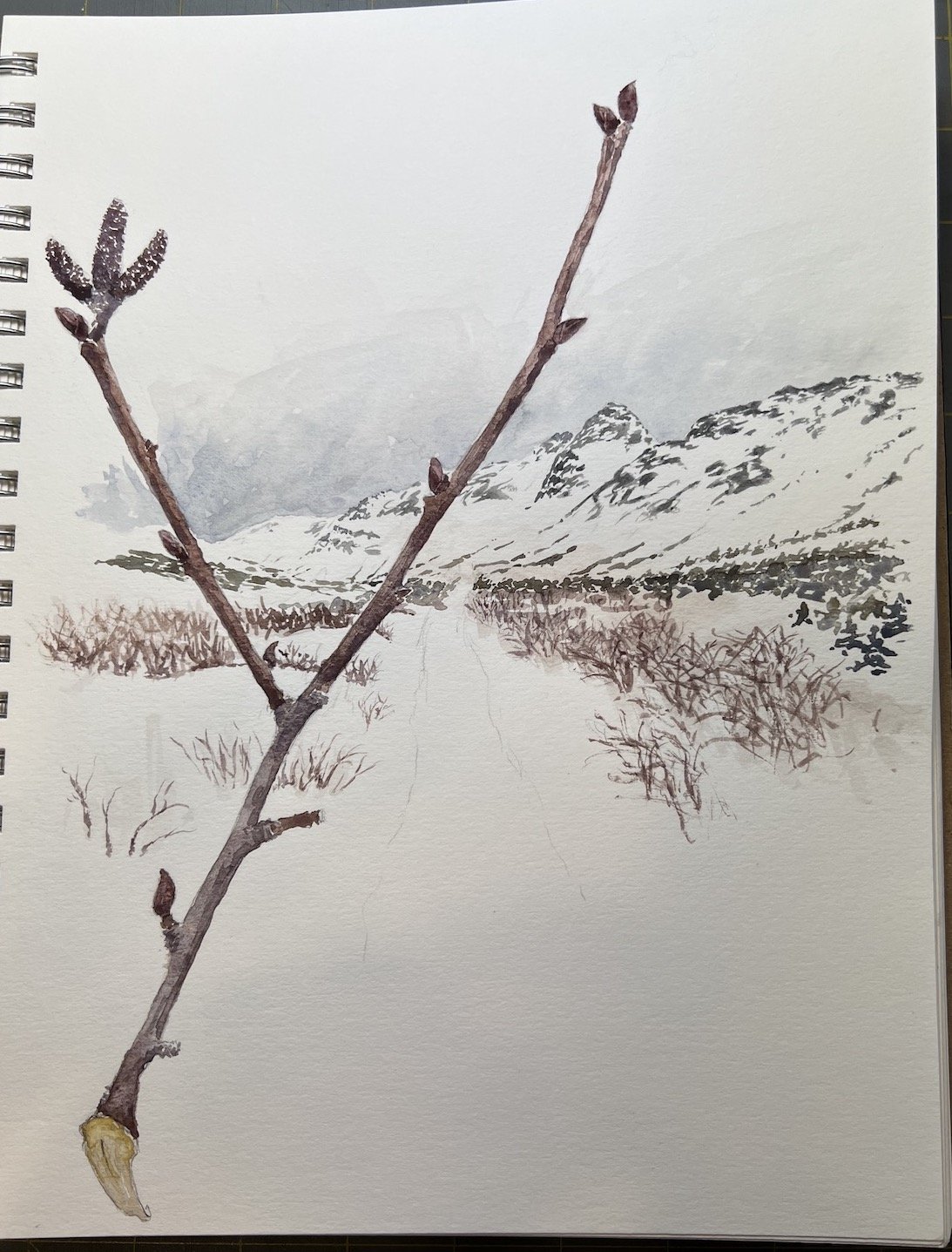Are You With Me on Loving Trees?
Reposted from February 2022 newsletter.
I have been fixated on trees this month. Secret: I love trees as much as I love birds. You can read a short piece about why in this month's blog post titled Reciprocity.
February has been a dull gray, snowy, and rainy month. Although I did get out doing some field sketching, I got a bit tired of sitting in my "mobile" studio (the car) and sketching in between windshield wipes.
For this month's newsletter, I turned to a collection of twigs I'd gathered from various shrubs and trees in open areas around Anchorage in an effort to identify species.
Studio work! Here are three process photos.
Sitka Alder (Alnus crispa sinuata), shown here, is one of four native alder species in Alaska. I immediately recognized this shrub to be an alder species. It has similar conspicuous characteristics to Speckled Alder (Alnus incana rugosa) which I am familiar with back home in New England. It has distinct catkins and cones, the male and female reproductive parts, respectively. Categorized mostly as shrubs, some species are categorized as trees.
All of the reddish-brown area in the painting is alder shrubs! Alders are everywhere here as a successional plant along with willows. Both love a wet habitat.
Sitka Alder has been an important plant to Indigenous Peoples for ages as dyes, medical treatments, and for making useful items like snowshoes.
It is an incredibly important plant for the environment in which it grows. It stabilizes disturbed, nutrient-poor sites (think steep, wet slopes and avalanches). It has reclaiming and soil-enriching properties (think clean-up and nitrogen-fixing).
It provides shelter and nesting sites for small mammals and birds (although, a moose could snuggle in under a mature specimen of this shrub!) And it is a valuable food source for many wild animals throughout the seasons, from moose to beaver to song- and game birds.
Are you with me on loving trees yet?



